How do you Grow Peas from Seed?
This can be a difficult question to answer for beginner gardeners because of complex factors like weather, soil, type of peas, and pests.
This article will help solve this problem and give ALL experience levels of gardeners Easy-to-Follow Tips on growing Peas from seed indoors and outdoors.
And I recommend scrolling to the bottom of this page to find answers to the 3 most frequently asked questions most gardeners have when growing Peas from Seed.
[toc]
Tip #1: Choose THESE 3 Peas Types

While there are hundreds of varieties of peas you can grow from seed, I am recommending 3 kinds to choose from.
These are the easiest types when trying to learn how to grow peas from seed.
It should be noted that both types of peas will require well-draining soil that has a pH level between 5.8 – 7, full-sun, plenty of water, and hardiness zones between 2-9
A) English Peas
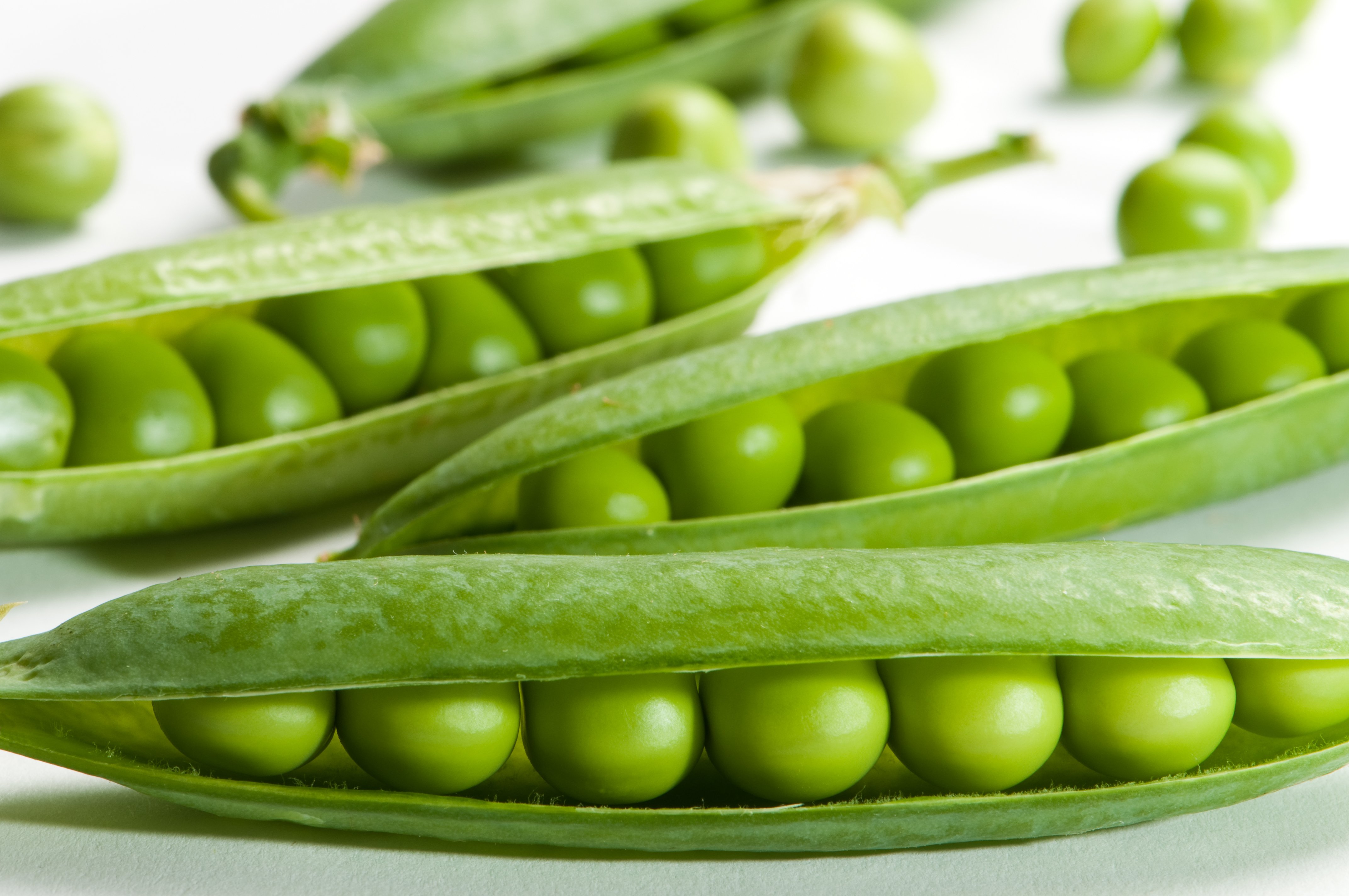
English Peas grow in hardy zone 2-9, require partial to full sun, and grows best in a loamy soil.
This type of pea does not have an edible pod and you have to wait until the peas are plumped and about to pop out of their shell before eating them.
This is also the one type of pea that grows great as a bush or up a trellis and is the fastest type to mature.
You can these peas raw or cooked and some popular kinds are Green Arrow, Maestro, and Lincoln.
B) Snow Peas
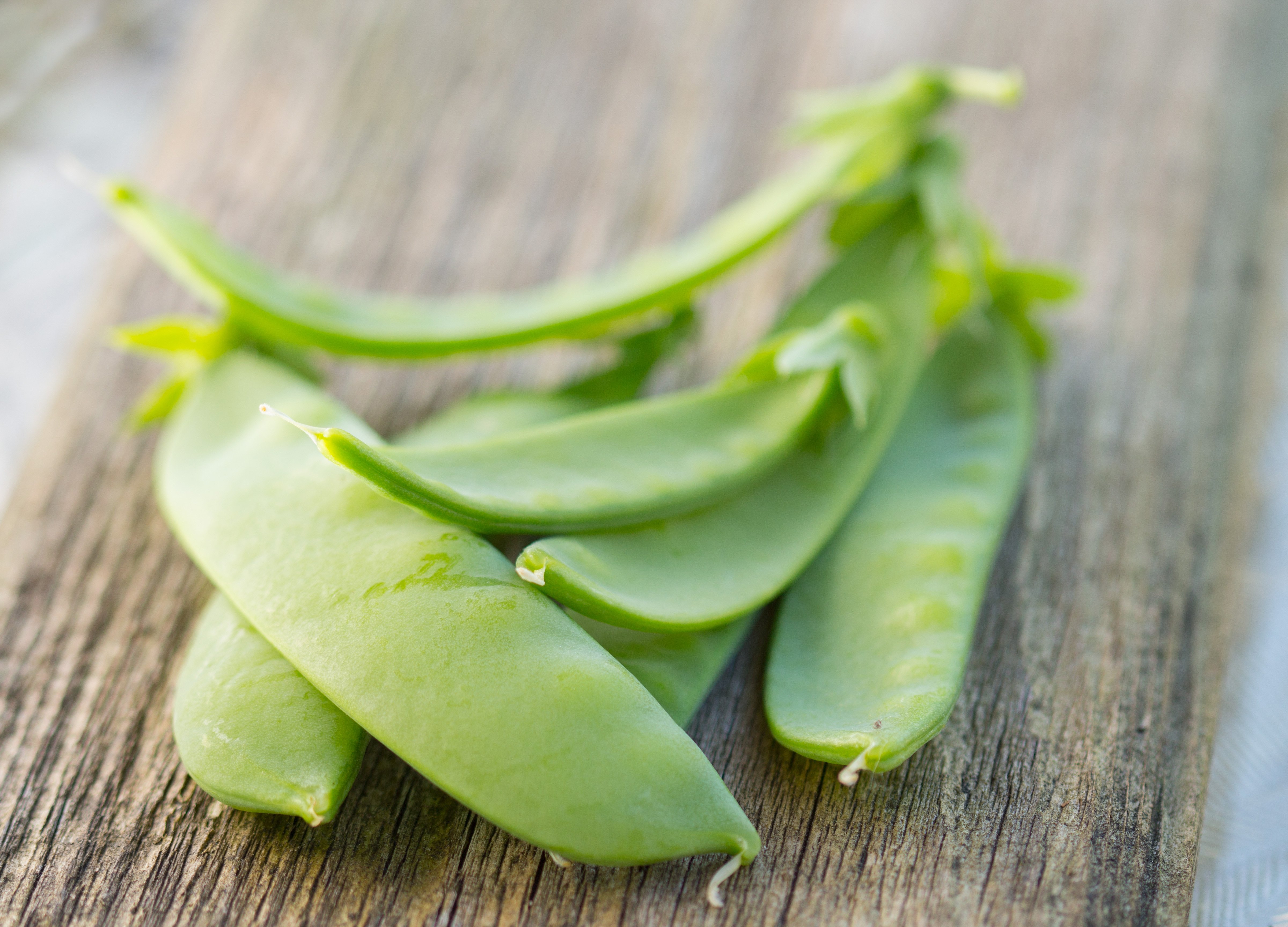
Snow Peas grow in hardiness zones 2-9, prefer full-sun, and should be grown in dryer soil.
This type of pea is often referred to as Chinese Peas and have flat, edible pods.
While you can eat the peas and they do not need to be plump before harvesting, it should be noted that they take the longest to harvest at 55-65 days.
The peas themselves are very small, are usually found in stiry-fry, and can be eaten raw or cooked. Expect a sweet flavor when you add these to your meals!
The most popular types of Snow Peas are Mammoth Melting Sugar, Oregon Giant, Golden Sweet.
C) Sugar Snap Peas
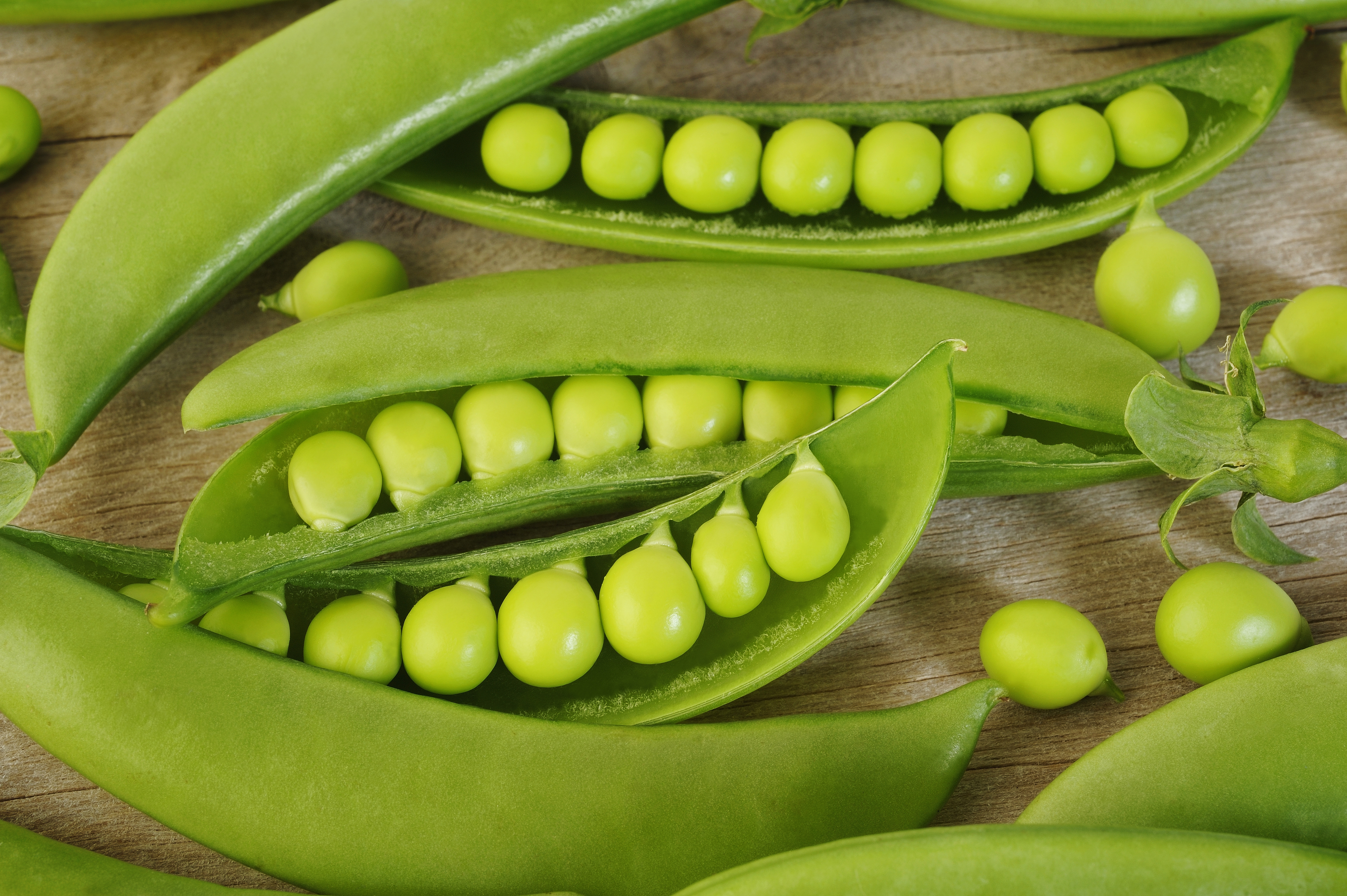
Sugar Snap Peas may be the most popular type of pea in North America.
This type of pea grows is usda hardiness zones 3-11, should be grown in full-sun, and needs well-draining, loamy soil.
This pea is a cross between sugar snap peas and English peas. Sugar Snap peas are known for their plump peas, but their pods are crisp and can also be eaten.
Sugar Snap peas will take about 50-60 days to mature, are incredibly sweet, can be cooked, but are usually enjoyed raw.
The most popular types of sugar snap peas is Cascadia, Sugar Ann, and Sugar Daddy.
Tip #2: Starting Seeds Indoors

When learning how to grow peas from seed it is typically not recommended to start your seeds indoors due to the quantity you need.
With that being said some of the benefits of starting seeds indoors are minimizing the effect of weather, pests, and disease on your peas plants.
Step 1 – Begin Planting Seed 8 weeks Before the Last Frost

You will want to start your seeds inside approximately 4 weeks before you plan on moving your peas into your garden or moving your planter outside.
- You will first want to start by buying your seed. I recommend buying from Amazon because it is quick and inexpensive.
- You will then want to take 3-inch GrowKo Peat Pots and fill them up to approximately 80% full with Miracle-Gro Potting Mix.
- Next, spray your soil 5 to 8 times with a spray bottle. You will want the soil to be moist, not damp. Damp soil can cause unwanted fungus.
*Find Your Last Frost Date HERE*
Step 2 – Plant 2 to 3 Seeds Per Pot

- Sprinkle 2 seeds per pot about 1 inch deep and then gently brush the soil over the seeds. *Note, do not to bury the seeds.
- Then spray the soil again 5 to 8 times until it turns a dark color.
The video below also gives a great tutorial on how to plant seeds.
Step 3 – Provide Your Seeds with At Least 8 Hours of Sunlight

- After planting your seeds, provide at least 8 hours of sunlight by placing the pots by a window or a Grow Light if your windows do not receive enough sunlight.
*If you put your seeds closer than 4 inches they will burn and die. If you put them further away than 4 inches there is a chance they won’t get enough sun to germinate.*
You will also want to keep the room temperature between 40 degrees Fahrenheit
- This is the temperature needed so that your seeds can turn into plants.
Step 4 – Spray, Spray, Spray
After your initial planting, you will need to spray the soil once to twice a day for approximately 7 days.
It will take approximately 4-7 days for your seeds to germinate or “pop” through the soil.
Once your seeds have germinated and sprouted through the soil, you will want to continue to spray them twice until they are about 3 inches tall. This may take an additional 10 days.
Step 5 – Thin & Transplant your Peas Plant into a Larger Pot

Once your peas reach about 3 inches tall you can remove the smaller of the two plants.
You can do this by taking scissors and snipping the smaller of the two plants right at the soil line. This will allow healthier pea plants to grow to its full potential.
Next, you can transplant your pea plant to a 1 Gallon Nursery Pot.
Again, you will want to fill these pots about 80% full with your potting mix.
Next, you will want to make a hole approximately 3 inches deep (about the size of your pea plant at this point).
Then turn your existing small pot upside down, pinch the bottom of it, and then gently pull the soil and your plant out.
You will then place it in your 5-gallon pot and fill it with soil.
Immediately after you do this, spray the soil about 5 to 10 times.
You will then want to leave your peas in this pot until it is ready to transplant outside.
Tip #3: Transplant Peas Outside
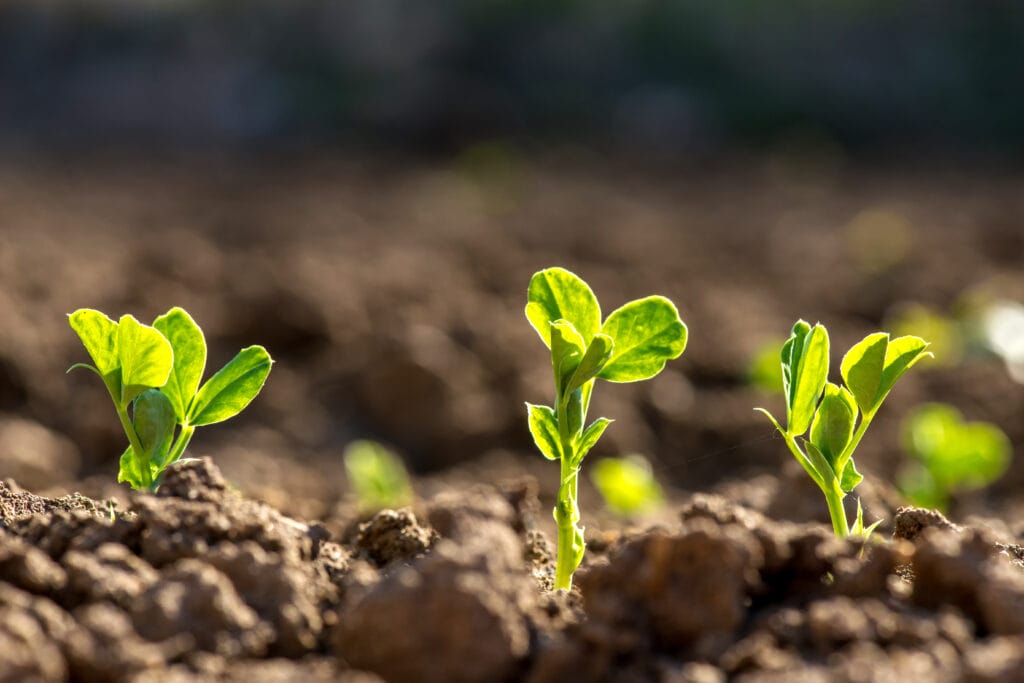
Approximately 1 month before your last frost you can move your pea plants outside.
You want to do this approximately 1 month before the last frost because peas thrive in cold weather and once summer comes you will get little to no harvest.
Below, is a 2 step process for transplanting your Peas outside into your garden.
Step 1 – Do THIS if you will be keeping your Peas in its container all spring!
If you decide to keep your Peas in the pots then there is no need to transplant. You will only need to apply compost or Miracle-Gro Potting Mix.
It may be of benefit to buy a trellis for your pea plants to grow on too if you plan on keeping them just in pots all spring.
- Apply approximately 1/4 inch of potting mix to your planter
- As soon as you apply your fertilizer make sure to water the Peas for approximately 15 to 30 seconds
- Every week until harvest water your Peas twice a day and keep it in full sun to promote fruit growth.
If you want to learn more about growing Peas in containers, I recommend watching the below video:
Step 2 – Do THIS to Transplant your Peas into your Garden!
- About 1 month before you plan on transplanting your peas into a garden dig holes about 8 inches deep and filling it with compost. Space holes 6 inches apart.
- Dig your holes in an area that will receive at least 8 hours of light.
- Next, place trellises behind the holes where you plan on growing your peas.
- Then after the last frost transplant your peas into the garden exactly the same way you transplanted it into the larger pots.
- Immediately after you transplant your peas outside add
Miracle-Gro Plant Food and water the soil for about 30 seconds. - Finally, water your peas once a day for about 30 seconds. Continue doing this until you harvest your peas mid-spring.
- Related To: Best Garden Hoses
Tip #4: Starting your Seeds Outside
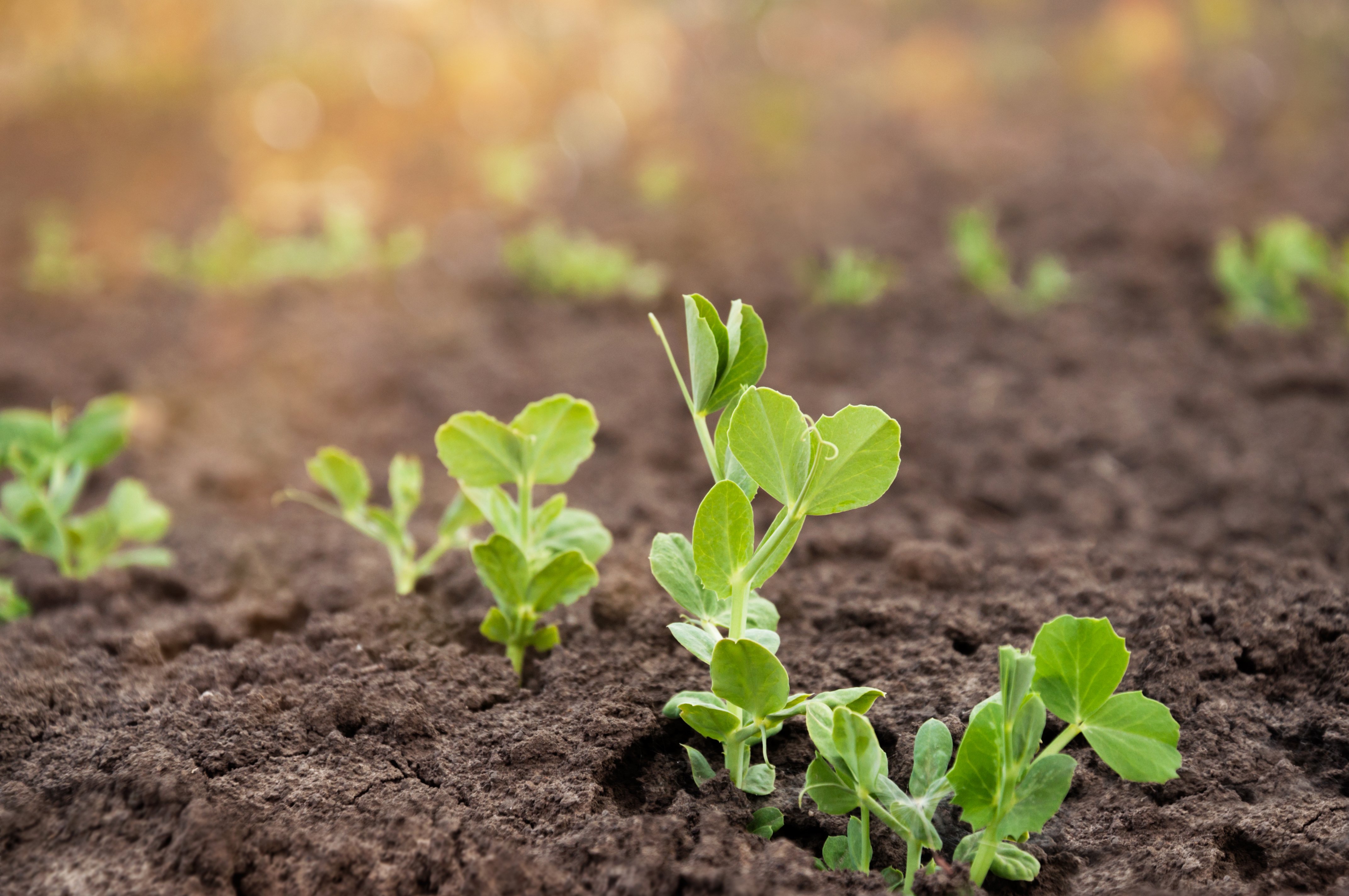
Peas is one of the easiest vegetables to grow outside, no matter where you live.
Whether you do not have the ability to start your seeds indoors or just want to start your seeds directly in a garden then I recommend following the below directions when learning to grow peas from seed.
Step 1: Start Your Seeds 6-8 Weeks Before the Last Frost
You should always start your pea seeds 6-8 weeks before the last frost. Peas will germinate best at temperatures between 40 degrees Fahrenheit and will produce the best during early spring temperatures (50 degrees Fahrenheit).
If you want to know your last frost date then I recommend Clicking HERE.
Step 2: Plant Your Seeds This Way!
Once you decide to start seeds outside you will want to do the following simple steps:
- Find a location that is full-sun and has a pH level between 5.8-7.0.
- Dig 1-inch holes with the tip of your finger or a pencil.
- Keep holes approximately 4 inches apart to allow for the peas to grow.
- Lightly sprinkle 2 pea seeds in each spot. It should be noted that not all seeds will germinate and you can always thin your plants out after they grow.
- Lightly cover your seeds and spray 2-3 times until the soil turns a dark brown color.
- Add a trellis or wire fence and a sturdy post for your pea plants to grow up.
You can learn how to grow pea plants up a trellis by watching the below video:
Step 3: Continue Watering your Seeds
After you initially plant your seeds you will want to water them 2-3 times a day until the soil is dark brown.
You will do this until the seeds germinate and then continue doing this until they become at least 3 inches tall.
*If the weather is hotter than usual for your garden then you may need to water several more times a day then described above.
Tip #5 Effectively Care for your Peas THIS Way!
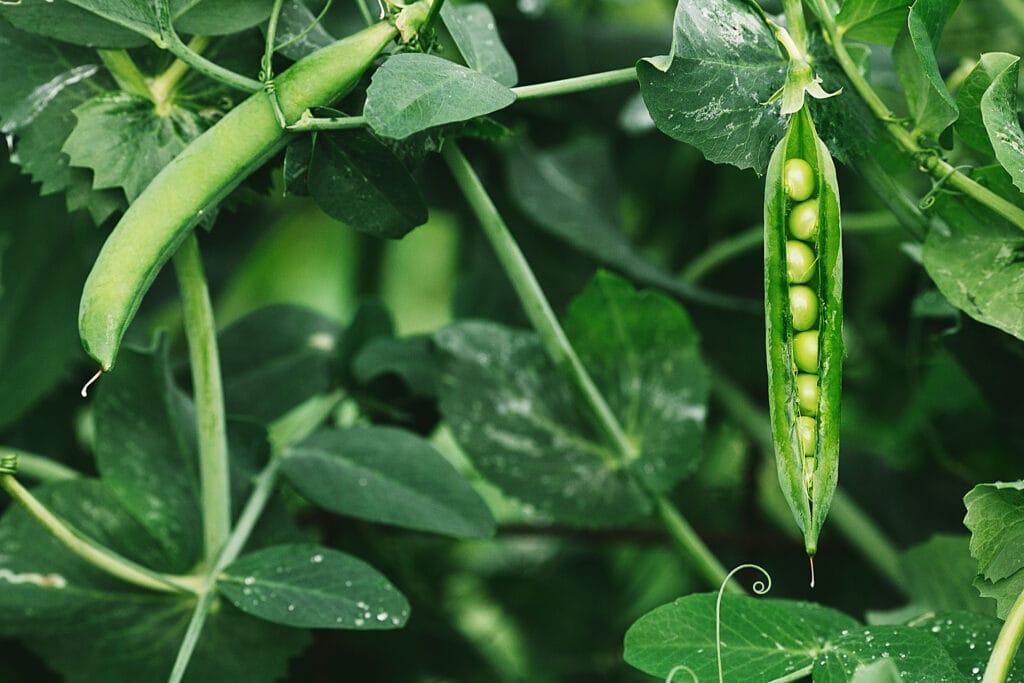
Below are caring tips for your Peas throughout the summer:
- Keep Your Soil Healthy – Quickly inspect your soil for fungus, harmful worms, and weeds before you plant and throughout the summer. Remove and replace it with new soil as needed.
- Mulch – Mulch around your plants with compost at the beginning of the year to prevent the possible spread of fungus.
- Water the soil, not the plants. By watering leaves, you increase the risk of spreading fungus and other diseases.
- Remove diseased and dead plants. This is the easiest way to prevent the spread of deadly diseases. If you notice yellow spots on leaves it means you may have blight fungus and will want to remove the leaves.
- Plant your peas at a new spot yearly. This is key to preventing seasonal diseases and insects from attacking the same plants year in and year out.
- Prevent Insects. The best way to prevent them is through an insecticide. If you don’t want spider mites, stinkbugs, or Japanese beetles ruining all your hard work I recommend purchasing Sevin Bug Killer.
Tip #6: Effectively Harvest Peas THIS Way!
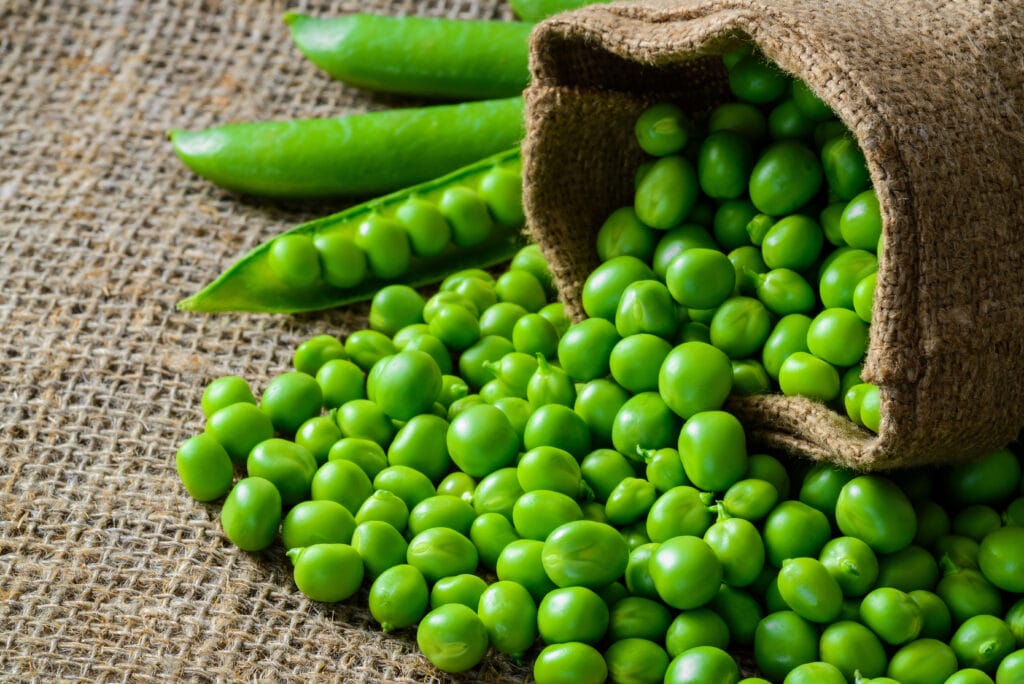
Below are several tips to remember when harvesting peas:
- Harvest your peas 6-8 weeks after planting.
- For the best flavor, harvest your peas when the pods are round, have a shine, and are bright green. If it is a dull green then it is past its prime.
- Harvest your peas by pulling and twisting where the pea pod meets the plant.
- Harvest your peas early and often. This will allow for more peas to grow.
Frequently Asked Questions (5 Questions)
1. What are the best ways to store peas?
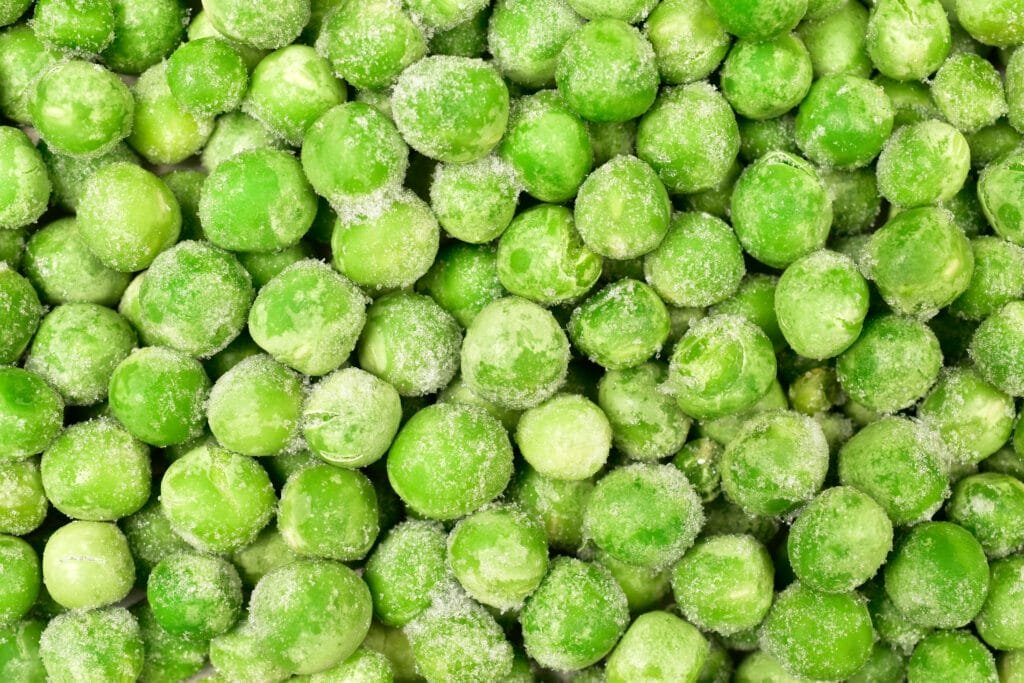
Below, will give you several guidelines depending on the type of peas:
- You can store peas are room temperature for up to a week before using them.
- You can store unwashed peas in the fridge for a little over a week.
- If you want to store peas in the freezer for up to a year. They will lose texture though.
- If you want to store peas for a year you can also dehydrate them. Again, they may lose flavor.
2. What are the Best Uses for Peas?
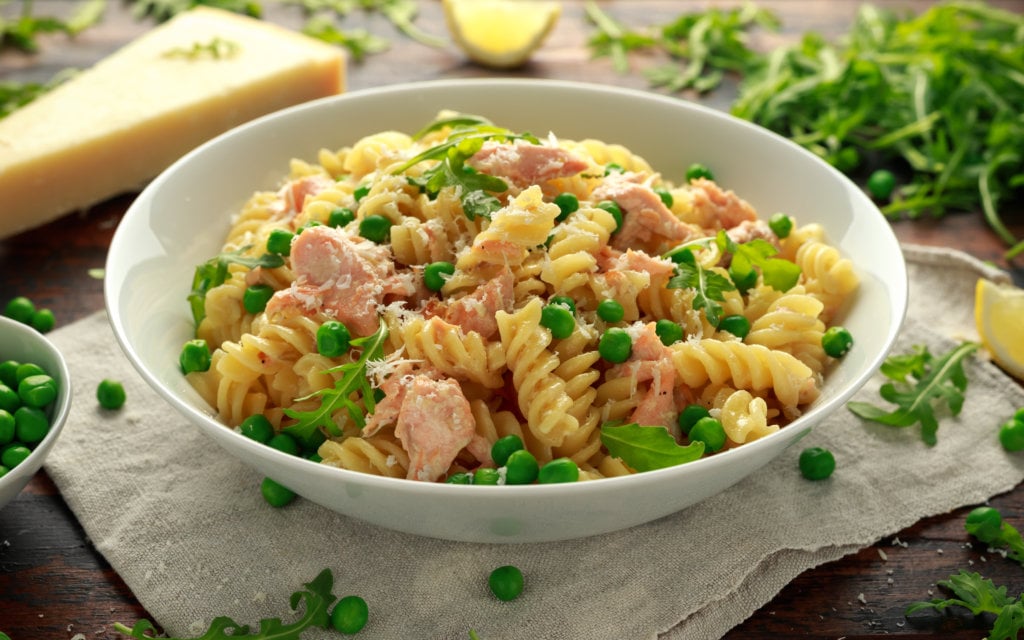
There are numerous uses for peas in food. Below, are some of the best ways to use peas:
- Eating Peas Cooked
- Eating Peas Raw
- Peas in a Casserole
- Related: 10 Tasty Recipes
3. What type of Peas Seeds should I Use?
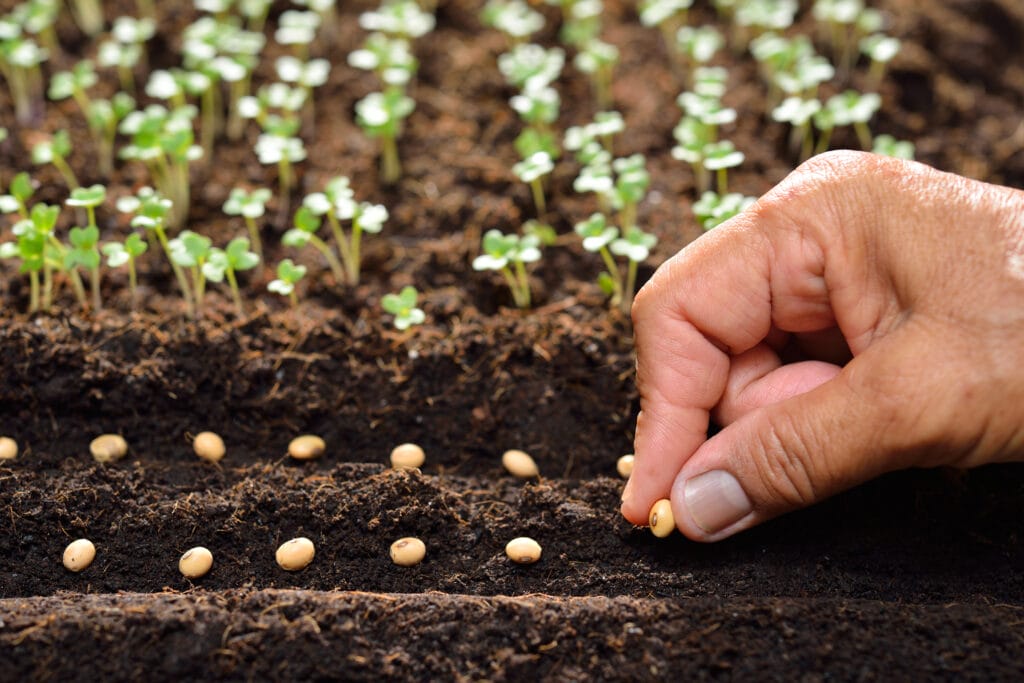
There are four types of seeds that can be used to grow peas; heirloom, organic, hybrid, and GMO.
I recommend using Heirloom or Hybrid seeds. Gardeners do not have access to GMO seeds and organic seeds is a marketing term and not truly a type of seed.
A. Heirloom
- These seeds contain all the pea’s original traits and produce some of the most beautiful and best-tasting peas out there.
- The downside of this seed is that it is the costliest (due to its rarity).
- In addition, expect the least amount of yield from this type of seed due to susception of disease and other elements.
B. Hybrid
- Hybrid seeds were made from combining the genes of the same group of plants. This is not a bad thing.
- This type of seed is what most gardeners use when learning how to grow peas from seed.
- The goal with hybrids is to produce a plant that contains the best features of both parent plants.
- This seed is critical if you want the most resistant plant against mother nature’s elements, insects, and diseases or want the most yield!
4. What Type of Fertilizer Should I Use for My Peas?
The best type of fertilizer for peas is compost.
- Related: Ultimate Composting Guide: What to Compost
- Related: Yimby Tumbler Composter: 5 Reasons to Buy Today
And if you don’t have the time or ability to create compost then I recommend buying Miracle-Gro Plant Food for your peas.
.
5. What Type of Soil Should I Use for My Pea Plants?
If you will be keeping your pea plants in containers all year then you will want a well-draining potting mix that provides the correct amount of nutrients like Miracle-Gro Potting Mix.
If you will be planting your peas into a garden then you will want to add a nutritious garden soil mix into the ground, such as Miracle-Gro Expand N Gro